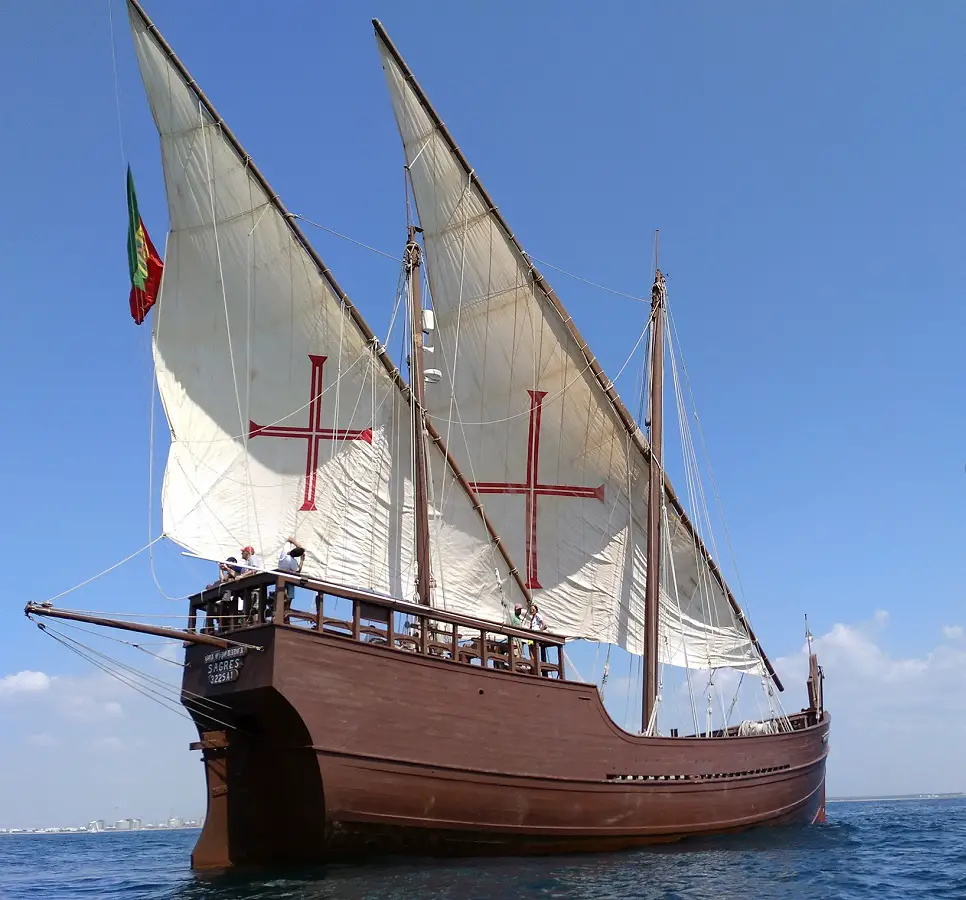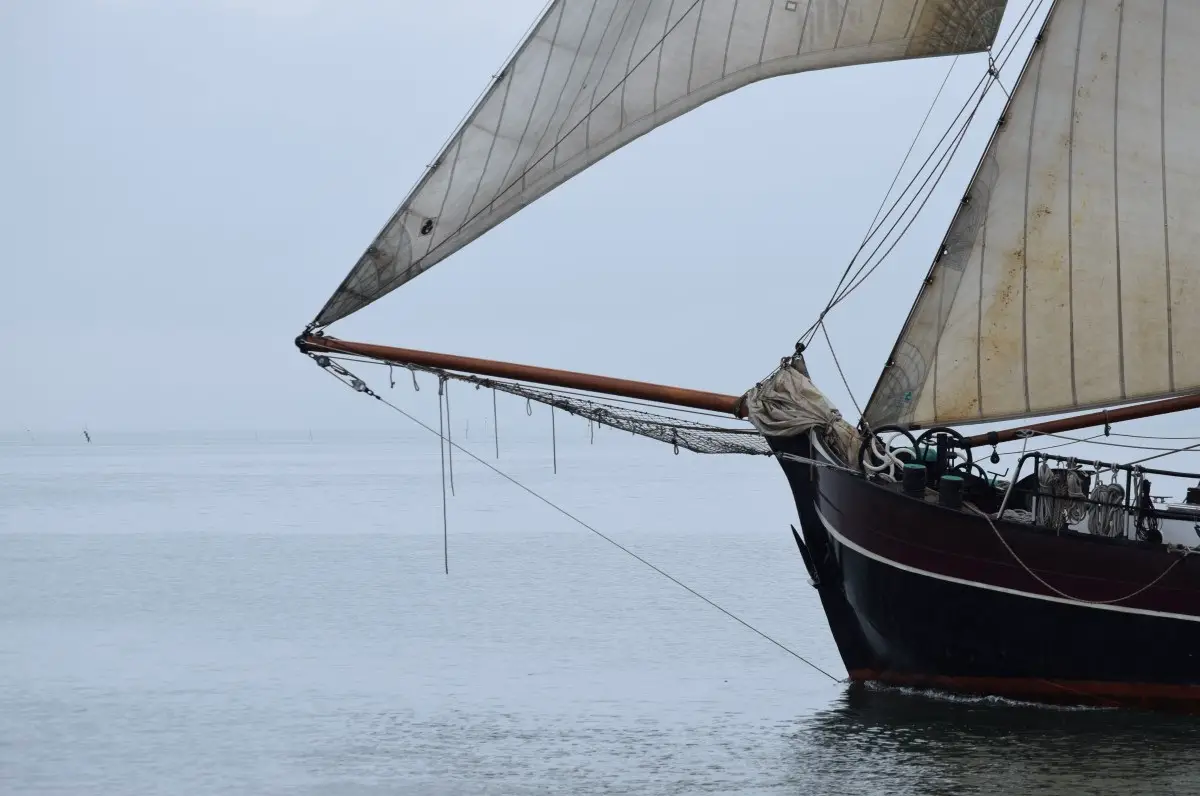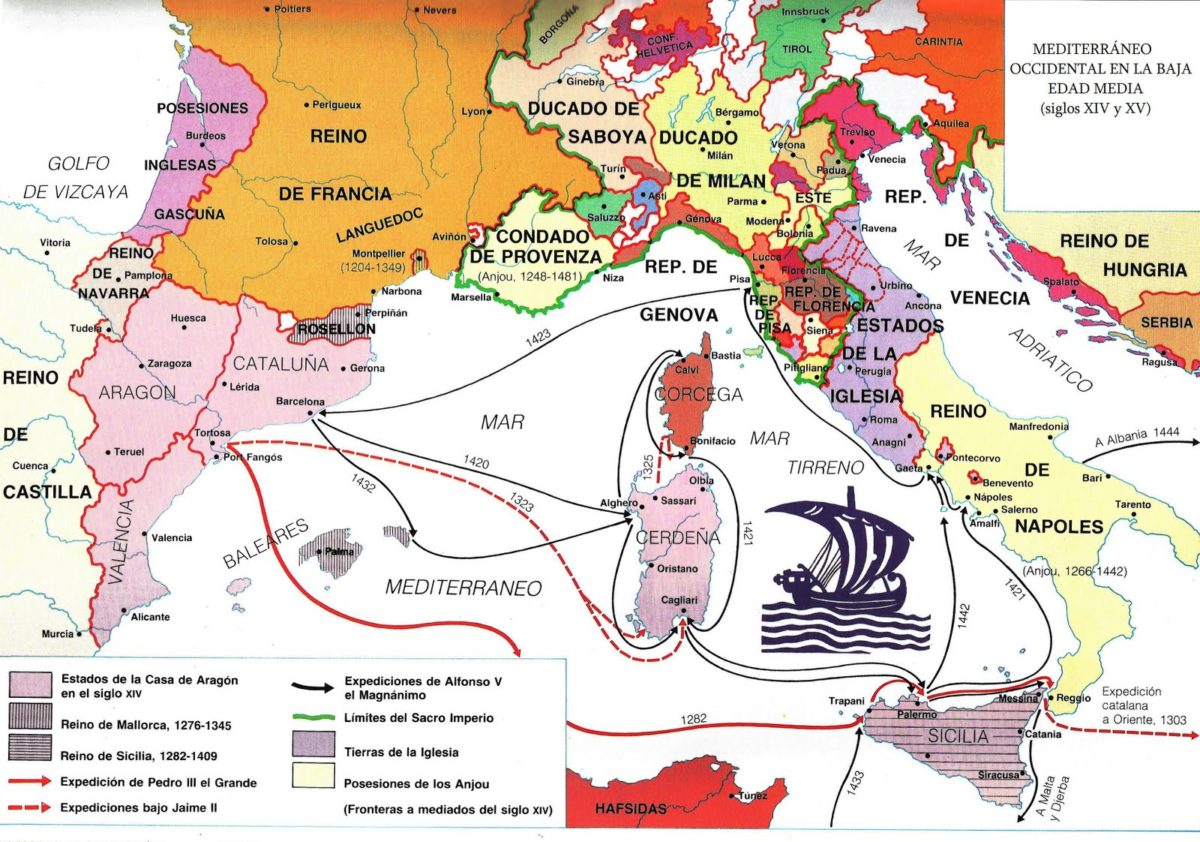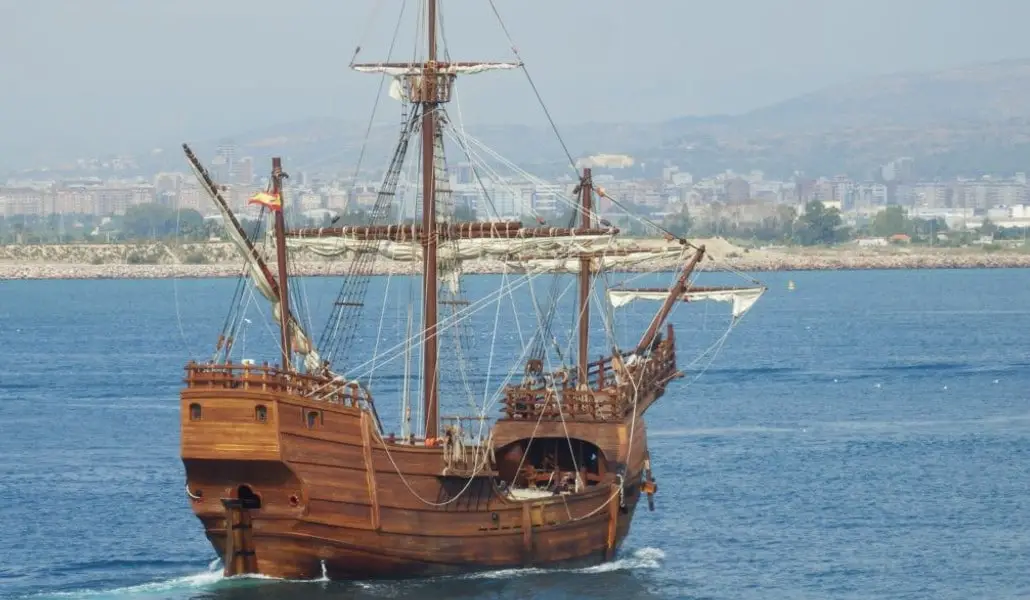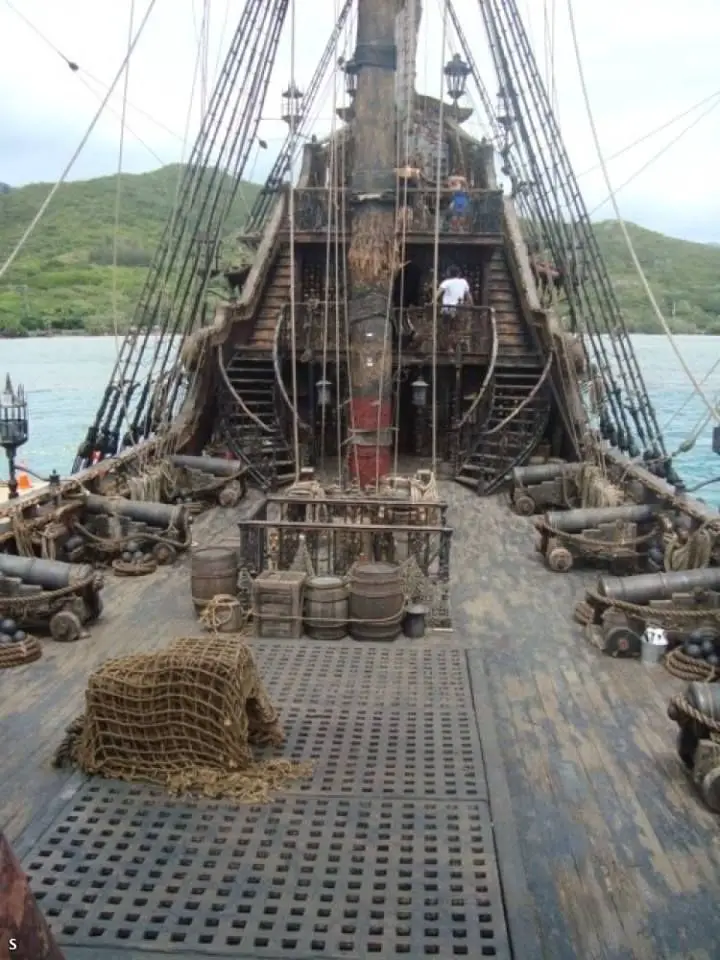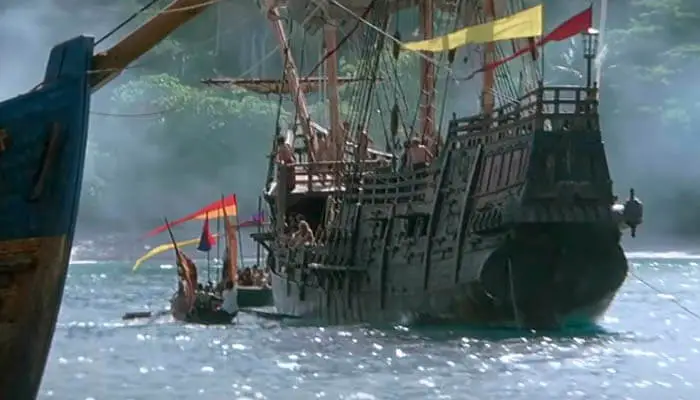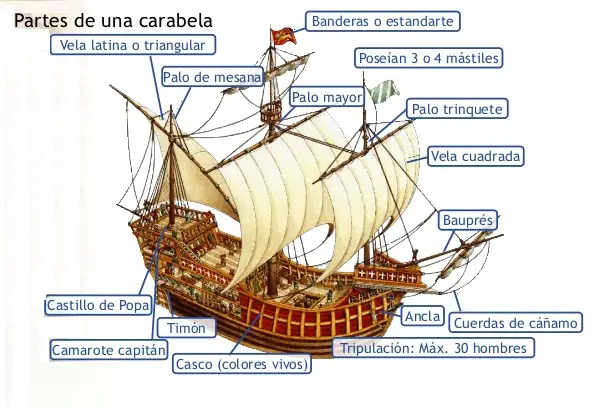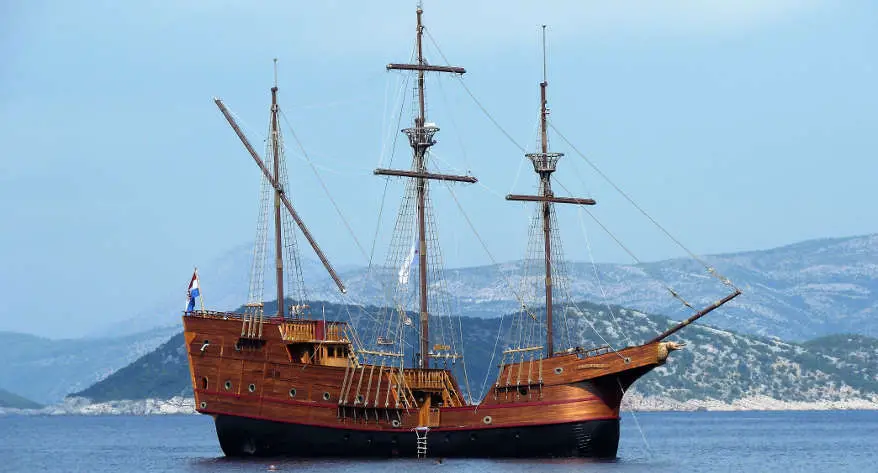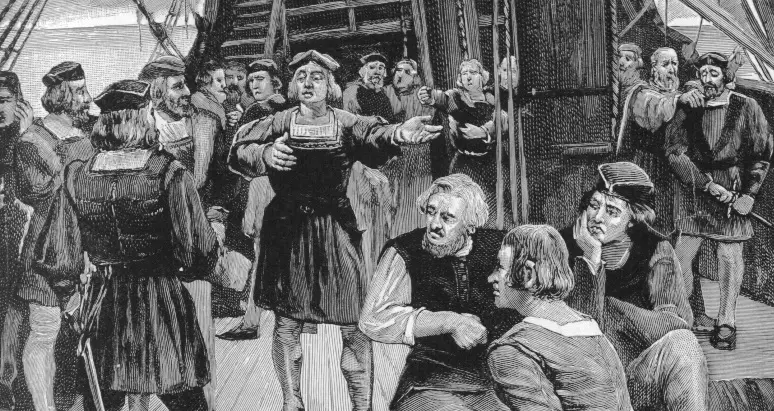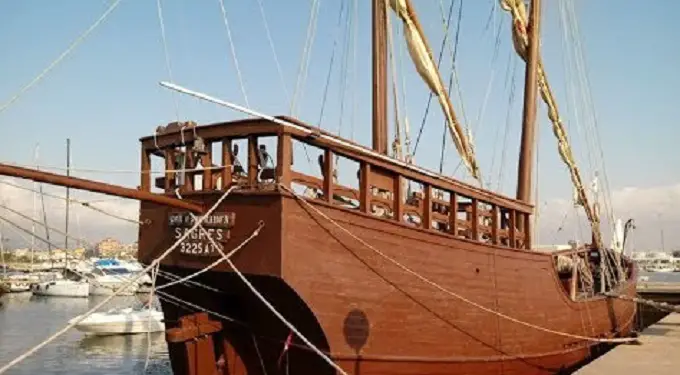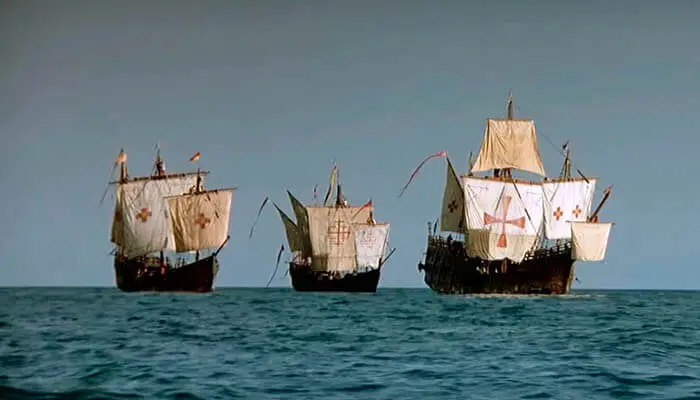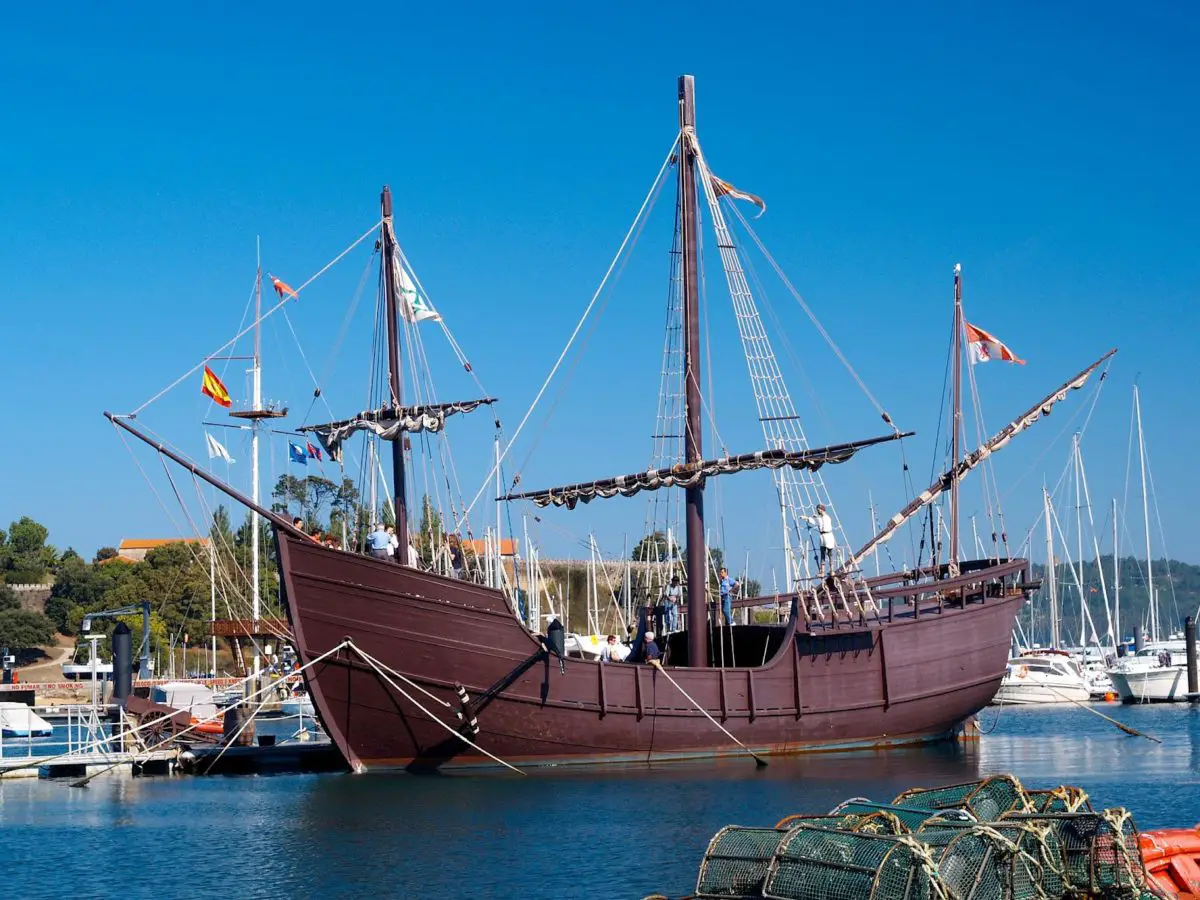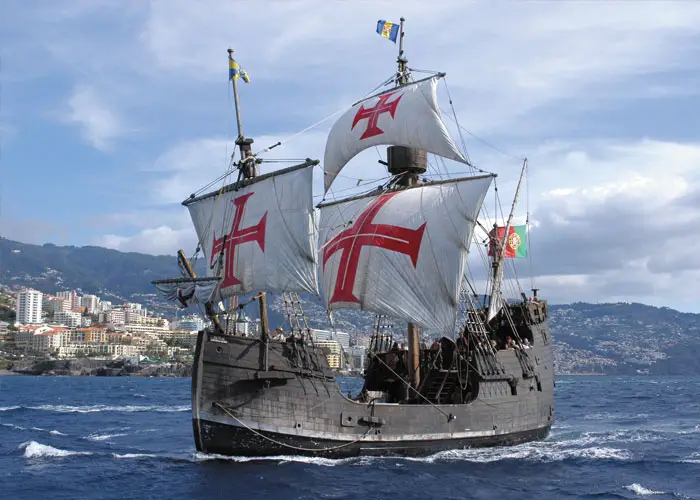Last Updated on August 28, 2023 by Hernan Gimenez
The famous caravel is a ship that sailed the world’s oceans for a long time during the Age of Discovery. In this article, you will learn about the history of the caravel, its characteristics and early designs, as well as the most famous caravels that existed.
Indice De Contenido
What is a caravel?
The caravel is the famous light sailing ship that sailed the world’s seas and oceans in the 15th, 16th and 17th centuries.
Originating in Europe, it was widely used by Spanish and Portuguese navigators on their famous long expeditions in search of new territories for their countries.
Apparently developed by the Portuguese to explore the coast of Africa, the caravel’s main advantage was its ability to sail to windward, i.e. in the direction of the wind. It was also capable of remarkable speed.
According to the definition of important dictionaries such as the prestigious Merriam Webster, a caravel is a “small ship of the 15th and 16th centuries with a broad bow, a high and narrow stern, and usually three masts with lateen or square and lateen sails”, these being its most outstanding characteristics.
In later years, the term caravel was also applied to the small fishing boats that sailed along the French coast, but it was also used to describe a Turkish warship.
Caravels were the main vessels of the Age of Discovery, especially in the Portuguese exploration of Africa in the 15th century. At this time, the relatively small size of the ship and the small crew were advantageous.
This kept the costs of the early expeditions down and allowed the ships to sail along the African coasts and rivers, where most of the trade took place, as the West Africans had no real ports on the sea.
It is difficult to define a single basic type of 15th century caravel. Most of the literature simply describes it as a two-masted lateen-sailed ship with a stern staysail, a full deck, a relatively shallow draft, a deadweight of around 60 tonnes and a crew of up to 20 men.
By the 16th century its role had become secondary as the long-distance trade to India and the Americas began to develop, highlighting the need for more cargo space for goods, supplies and large crews.
We suggest you read Top 10 Shipwrecks to learn more about this topic.
In these circumstances, the caravel was too small, so it was increasingly replaced by large ships, which the Iberians called naos, while the caravel was reduced to a ship used for escort, exploration and the transmission of messages.
History of the caravel
Until the 15th century, Europeans were limited to coastal navigation, using the barge or balinger or barinela, ancient Mediterranean cargo ships with a limited capacity of between 50 and 200 tonnes, suitable for these sea routes.
These vessels were fragile, with a single mast and a fixed square sail, and could not cope with the navigational difficulties of southern ocean exploration, where strong winds, shoals and strong currents easily overwhelmed their capabilities.
It is not really known when the caravel appeared as a ship, especially in a recognisable form. However, there are some records of ships described as a variation of the world “caravel” scattered in archives dating back to the 14th century, but we really have no idea whether they were referring to the same type of ship.
The situation is further complicated by the fact that the term “caravel” indicates the type of planking a ship could have, so in some records the term could be used for any ship with such planking rather than a specific type of ship.
However, some historians have pointed out that the caravel has its origins in Portuguese fishing boats built in the 13th century on the basis of the medieval Islamic qarib, the first boat developed in the Kingdom of Saudi Arabia.
Who invented the caravel? The caravel as such would have been created around 1430 under the patronage of Henry the Navigator of Portugal, based on existing fishing boats, and soon became the vessel of choice for Portuguese explorers such as Diogo Cão, Bartolomeu Dias or Gaspar and Miguel Corte-Real, and Christopher Columbus.
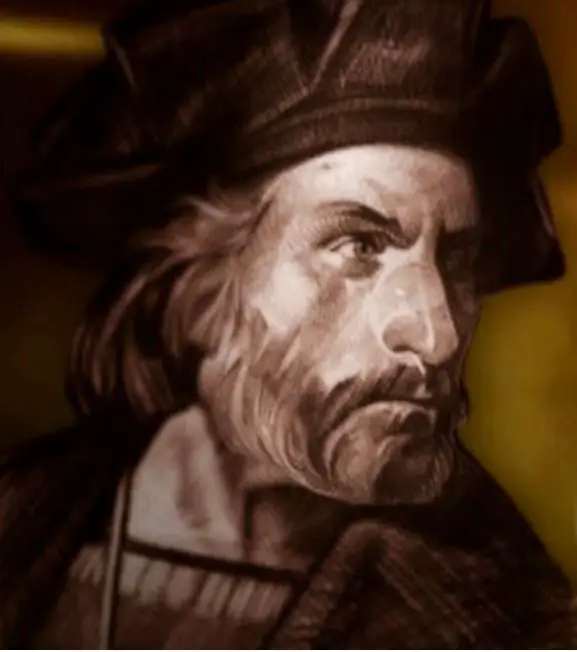
By the time of Henry the Navigator, the range of Portuguese explorers and traders had expanded to such an extent that conventional ship types had reached their limits.
As a result, Portuguese shipbuilders began to build ocean-going vessels based on existing types. The result was the caravels, sailing vessels with two to four masts.
Improvements added to the caravels to outperform the existing vessels of the time included a displacement of 100 to 180 tonnes, a shallow draft, a high stern and, usually, a sheet rig.
Sailing ships with crews of 20 to 60 men were fast and performed well in the wind, but very soon caravels became the standard ship for both Portuguese and Spanish voyages of discovery.
They were designed for this:
- Explore the sea route south along the west coast of Africa.
- To explore the currents and wind conditions in the South Atlantic
- Sail around the Cape of Good Hope.
- Successfully complete the Atlantic crossing.
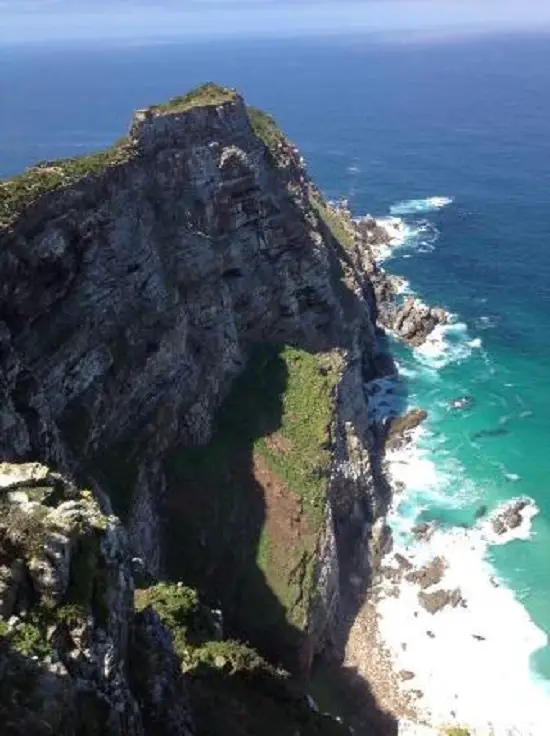
In terms of discoveries, the caravel began to appear with the Portuguese explorations of the African coast from the 1430s.
In Azurara’s Chronicle of the Conquest of Guinea, there is a clear difference between the first expeditions up to the 1430s, in which the ships are described as “barcha” or “barinelas”, and from 1440 onwards, in which all the ships are described as caravels.
In the 15th century, the Venetian merchant Alvise Cadamosto, hired by the Portuguese prince Henry the Navigator, sailed in a ship provided by Henry, the size of “90 Venetian boats”, with a capacity of about 55 tonnes of cargo.
For reference, this allowed him to carry at least seven horses in his hold, along with other goods and about 100 African slaves on his return, in addition to his crew, provisions and other cargo.
Exploration by caravel made the Portuguese and Spanish spice trade possible. However, for the trade itself, the caravel was later replaced by the carraca or nao, which was larger and more profitable for this type of trade.
The caravel was one of the most important ships in the development of the Iberian navy between 1400 and 1600.
First constructions
The first caravel constructions for exploratory purposes date back to the beginning of the 15th century.
Historians record, for example, that Prince Henry the Navigator of Portugal, driven by his expansionist ideals, chose this type of vessel to meet the demands of his voyage to the west coast of Africa in the 1440s.
Earlier explorers had used barges of about 25 tonnes with only one mast. They also experimented with longer and larger barinelas, but none of these vessels were suitable for the increasingly long voyages.
The caravel was built to perform the functions of an explorer. Although by the early 15th century the caravel had very admirable qualities, it was still far from ideal.
The main reasons it was chosen to explore the African coast were speed and the ability to sail to windward.
However, the caravel’s large lateen sail required a large crew, which was dangerous because the tiny explorer could not carry large quantities of fresh water for a large group of sailors.
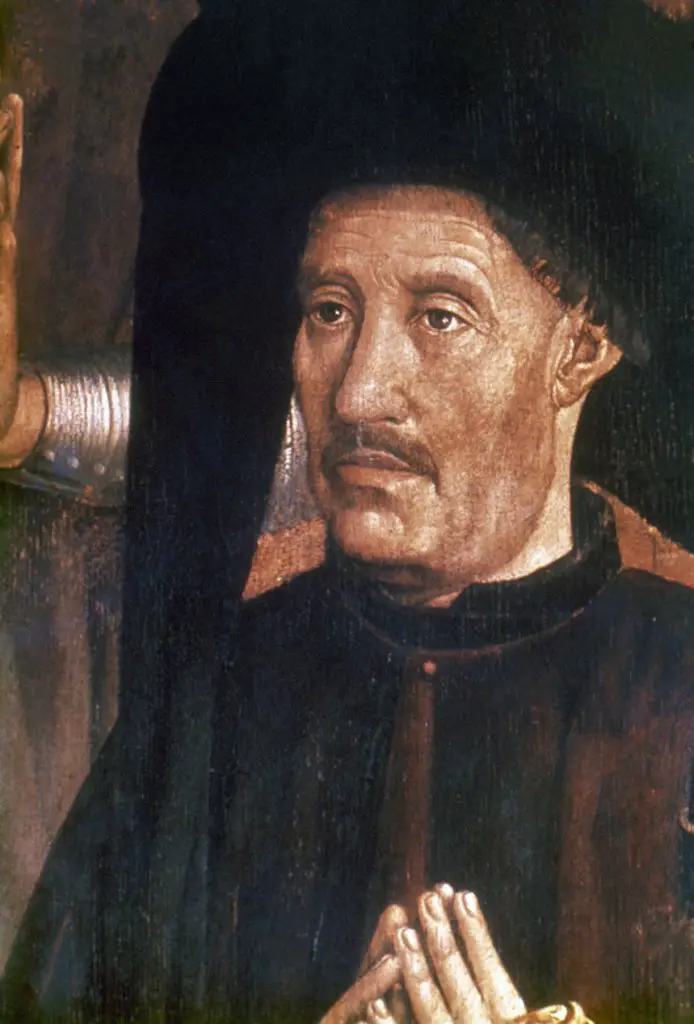
Then, in the middle of the 15th century, Iberian shipbuilding entered a new phase of design, adapting to the requirements of the voyages of discovery. To give an idea of the level of sophistication of shipyards and navigation in the 15th century, Don João II of Portugal had a 1000-tonne nao built at a time when they rarely exceeded 300 tonnes.
The keel of this huge ship was 31.50 metres long and 50 metres wide. There are records of other impressive Portuguese ships, such as the São João of 1533, which was one and a half times the size of the largest Indian ships.
Such ambition also required changes to the caravel as a ship of exploration. Instead of relying on the expertise of naval architects, these demands were met by skilled craftsmen who were able to adapt the ship’s geometry to the needs of an explorer.
What were they used for?
Initially used for maritime trade, the caravel later became one of the best ships for this type of voyage due to the boom in the discovery of new territories by both the Portuguese and the Spanish.
Its manoeuvrability and light weight made it ideal for long voyages, considerably reducing the total time spent at sea.
The caravel was particularly useful on the trade routes, as it was able to cope with the winds and currents often encountered in the Atlantic and was also well suited to navigating inland rivers.
At that time, important technical inventions were already in use, such as the compass, the astrolabe, Jacob’s staff or rod, or the very precise nautical charts, which reinforced and made more effective the caravel’s mission.
As the distance from home ports increased, the Portuguese needed more and more ships that could cover long distances quickly and, if necessary, without stopping.
The caravel proved to be the ideal vessel, not only because of its ability to sail upwind, but also because of its capacity to carry enough provisions and spare parts for a long voyage.
Navigators and explorers needed ships that could be refitted and repaired in the most inhospitable places, without the technical facilities of a shipyard.
Moreover, in order to continue the Portuguese discoveries, these ships had to be able to cope with the adverse conditions of the Atlantic currents and winds, as well as being able to navigate shallow coastal waters and rivers.
Drawing on the experience of Portuguese sailors in the Atlantic, the caravel increasingly became such a vessel from the 1940s onwards.
The caravel thus made a significant contribution to the history of navigation and the discovery of the world.
Characteristics of the caravel
The design of caravels changed over the years, but a typical caravel of the late 15th century can be described as a broad-sailed vessel of 50 or 60 tonnes of cargo; some were up to 160 tonnes.
It usually had two parts: a narrow, flat hull and a square-rigged sail to make better use of the wind.
It was between 18 and 25 metres long and 5 to 8 metres wide. The caravels of the late 16th century were even larger and, above all, wider.
The typical design had two or three masts of spars, rigged with lateen sails, i.e. triangular sails. These caravels were called “caravela latina”. The rudder was midships.
Later, in the last quarter of the 15th century, caravels were equipped with light artillery.
They were more manoeuvrable and easier to sail than the barque and the barinela, and because they were smaller, had a shallower keel and a relatively shallow draught, the caravel could sail upriver in shallow coastal waters.
It was very capable in strong winds, but a poor sailor in a downwind.
With lateen sails it was very manoeuvrable and could pass much closer to the shore, while with square-rigged Atlantic-type sails it was very fast.
Her economy, speed, agility and power made her the best sailing ship of her time. Limited cargo and crew capacity were her main drawbacks, but they did not prevent her success.
Later versions, which appeared at the end of the 15th century and with the increase in ocean voyages, added a fourth mast with a square sail to get ahead of the wind. These caravels were called “caravela redonda”.
The Armada caravel of the mid to late 16th century had a square rigged foresail and lateen sails on the main and mizzen masts, and there could even be two mizzen masts.
Caravels were usually built with a double tower at the stern, called a sterncastle, and a single tower at the bow, or forecastle.
As a type, caravels were smaller and lighter than the Spanish galleons of the 16th century.
The caravel was first built with a lattice of rails, with one deck, sometimes several decks, a steep stern with a stern rudder and some form of sterncastle.
A distinctive feature of the caravel was its relatively large length for its width, known as the keel-to-beam ratio.
The ratio started out at 4:1 or even 5:1 on early caravels, but over time, as the caravel grew in size and ocean voyages put the ship to the test, it widened to 3.5:1, then 3:1 and sometimes even 2.5:1.
Crew
The general rule of thumb for calculating crew size is to take 0.5 men for every tonne of cargo. This gives about 20-30 men per caravel for the typical 50 ton caravel. Or up to 50 men for the 100 ton caravels operating in the Indian Ocean.
In the 15th century, around 1450, the crew of Portuguese caravels usually consisted of:
- the captain
- pilot/navigator, who would be the one who actually piloted and steered the ship itself
- Scribe, who seems to have been placed by Henry the Navigator on each ship travelling to Guinea as part of his control of such voyages.
- A few men-at-arms, depending on the mission possibly more.
- Sailors, whose exact duties are not known.
- A slave interpreter, who would be rented to his owner and presumably taught Portuguese for the price of a new slave on the expedition.
Provisions, food and water
The sailors were fed with biscuits, dried fruit, salted meat and fish. They drank water and wine stored in barrels in the hold, and the captain was responsible for the distribution and safety of the provisions.
In addition to the common food, each sailor had an assigned trunk (or part of a common trunk space) into which he could put whatever he wanted.
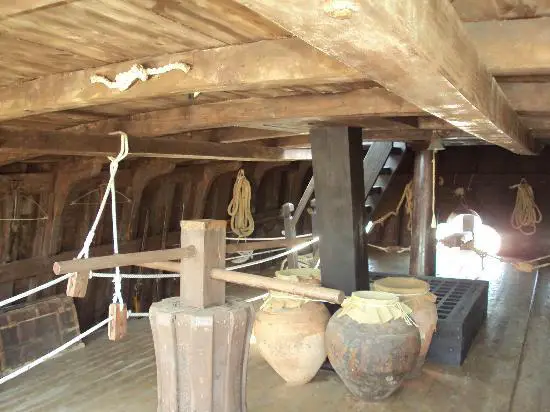
It was customary to use at least part of this space for additional, personal food and drink. The other part of the room was often used for things brought in to trade and earn money.
Weapons and armaments
Records found in 1455 mention several cannons or ‘bombards’ on board. The exact number and types are not specified. Crossbows, spears, swords and bats are also mentioned as weapons for self-defence. Much later, arquebuses or hand cannons appeared on ships bound for the Indies.
Hull
The caravel had a watertight hull made of wooden planks supported by transverse frames, often called ribs and bulkheads, joined by longitudinal stringers or roofs.
The strength of this hull ensured proper support for all the structures that were installed in what would become the tank areas, as well as the various components of the deck, such as the rigging and the rigging and deckhouses.
The line that connects the hull to the surface is called the waterline. This important structure, which was mostly submerged, provided the ship with its buoyancy and manoeuvrability.
Columbus’ caravels
Among the most famous caravels in nautical history are those used by the Genoese navigator Christopher Columbus on his mission to discover a new route to the Indies, under the patronage of the Catholic Monarchs of Spain.
It was on the 3rd of August 1492 that he set sail from Puerto de Palos de Moguer, in Andalusia, with his three ships, the Santa María, the Pinta and the Niña, towards the island of Gran Canaria.
On board these ships were 90 sailors, led by Columbus and assisted by Cristóbal Quintero, the Pinzón brothers and Pedro de Velasco.
Two of the three ships in which Christopher Columbus made his historic voyage were caravels, the Niña and the Pinta, while the Santa María was a nao, although it has always been called a caravel.
What are the names of Christopher Columbus’s ships?
The Niña
La Niña was one of the two caravels in the fleet of three ships that Christopher Columbus used to sail west in 1492, discovering the American continent for the Europeans.
La Niña was a lateen-sailed caravel that originally belonged to the Niño brothers of Moguer, hence the name by which it was known, although it was actually called Santa Clara, in honour of the Santa Clara convent in that city.
This ship, built in the town of Moguer, was chosen by the Pinzón brothers for its manoeuvrability and was paid for by the City Council of Palos.
It was a caravel with a capacity of 50 tonnes and a length of 20 metres, which Columbus used to return to Palos, where he arrived on 15 March 1493.
La Niña’s sails did not have ropes, so there was no system of ropes to reduce the surface area in the event of strong winds.
The anchors that supported the masts were attached to the sides of the ship. The caravel had no fore deck and the anchor was quite small.
The captains responsible for manoeuvring the ship were Vicente Yañez Pinzón and Juan Niño, the owner. They arrived in America with 26 men on board.
The Pinta
This was a caravel, also built in the Palos shipyards, chosen by Martín Alonso Pinzón for the expedition to the Indies that Admiral Christopher Columbus was to lead.
The ship weighed 60 tonnes and had a crew of 24. It was the fastest of the three and it was from this ship that Rodrigo de Triana sighted land on 12 October 1492.
It was the first ship to carry the news of the discovery of America or, as they believed, the course of a new route to the Indies.
It returned to the port of Baiona in Pontevedra on the 1st of March 1493, captained by Martín Alonso Pinzón, bringing with it the newly discovered products.
It was also used to bring the good news of the discovery of America or the new route to the Indies, depending on what was believed at the time.
The Santa Maria
It was the largest of the three ships and, as mentioned above, was more of a nao.
It was about 36 metres long, had three masts and a large carrying capacity of up to 200 tonnes, which meant it was the slowest of the three.
Thirty-nine men sailed on it, with Christopher Columbus as its admiral.
It was built in a shipyard in the city of Galicia, which is why it was originally called La Gallega. It belonged to Juan de la Cosa, a sailor who worked as a cartographer for the Catholic Monarchs.
It should be remembered that none of the ships with which Columbus arrived in Hispaniola were new, and the Santa Maria in particular ran aground off the coast of Haiti on 25 December 1942.
It was abandoned and its wood was used to build Fort Navidad, the first Spanish settlement in the Americas.

